Last-Minute NYC Holiday Gift Guide 🎁
We’ve created a holiday gift guide with presents for the intrepid New Yorker that should arrive just in time—


Last Friday, we attended “Polytope,” an immersive food and art event inside the Beaux Arts townhouse that houses the American Irish Historical Society on Fifth Avenue. The event was the brainchild of composer Ricardo Romaneiro and featured the culinary gifts of Columbia University senior, Jonah Reider, who is also behind the secret supper club Pith. Polytope, for those less geometrically oriented, is an object with flat sides that can exist in any general number of dimensions – and the name of the event became clear as the experience unfolded.
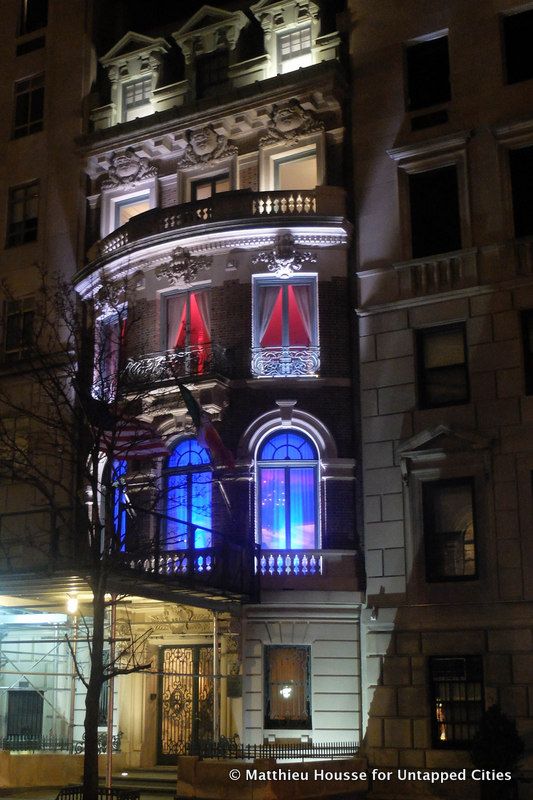
The American Irish Historical Society’s headquarters was originally the home of Mary A. King, situated in a prime location opposite the Metropolitan Museum of Art. Built in 1901, the five-story townhouse was completed while the entrance to the Met Museum was still in Central Park off an entrance drive. The uptown location was considered far enough from the commercial fray taking over the lower parts of Fifth Avenue, where the city’s elite once built their opulent mansions.
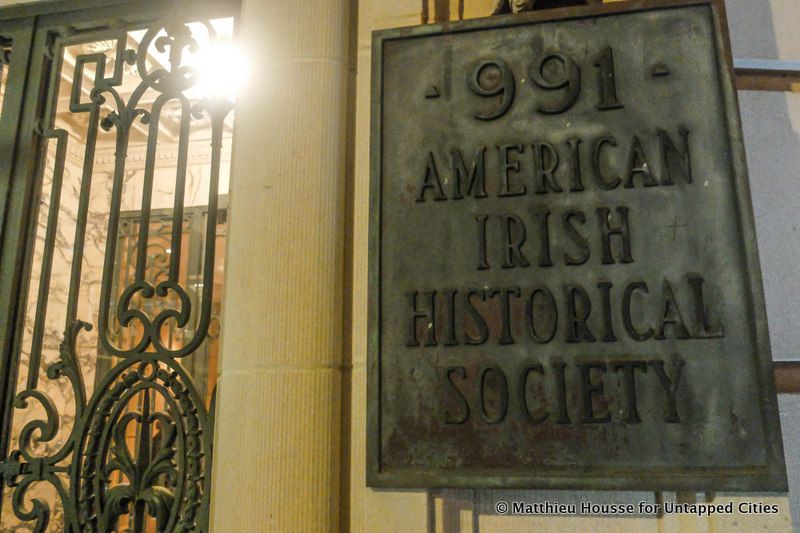
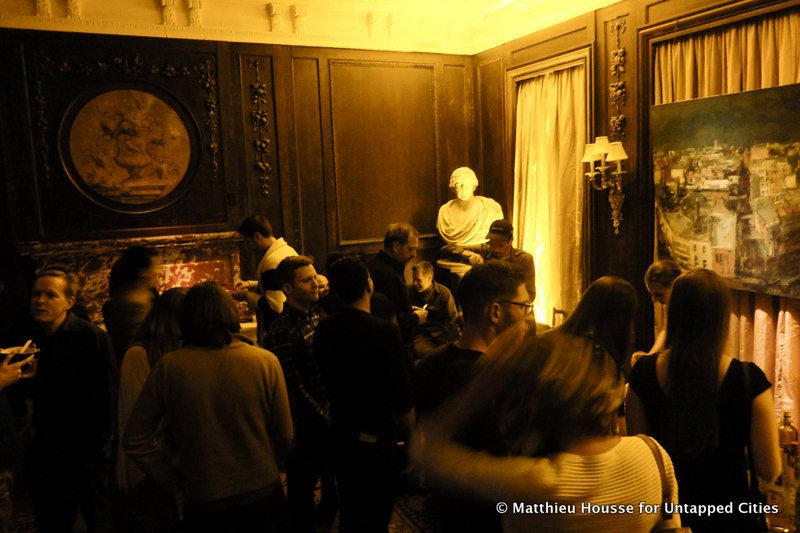
The townhouse would later become the home of banker David Crawford Clark, who commissioned the famed architect Ogden Codman, Jr. to renovate the interiors, and was later sold to the scandal-plagued president of the United States Steel Corporation, William S. Corey. In 1939, the American Irish Historical Society, founded in Boston, purchased the mansion for $20,000.
The American Irish Historical Society counts personages like Theodore Roosevelt, composer George M. Cohan, New York Governor Hugh Carey and more among its members.

From 2006 to 2008, the building underwent an extensive five million dollar renovation. The building contains a 10,000+ volume library which the Society calls “the most complete private collection of Irish and American Irish history and literature in the United States,” a dining room, music room, kitchen and sitting room.
After being greeted by the hosts at Polytope, we were invited upstairs to wander between the half a dozen well-preserved historical rooms where our senses were stimulated through performances of different arts. Colored lights emphasized the architectural gems of the townhouse, with each room populated with a different dominant color to created unique atmospheres.

In each room, guests gathered around stands where a selection of gins, rye, bourbon, Suze (a French bitter) and other spirits were mixed with hand-made juices and fruits to create refined cocktails. With a glass of citrus Old Fashioned in our hands, we kept on wandering. A table of savory blanched carrots with almond and soy leaves were surprisingly displayed on a transparent glass sheet. It was one of the many dishes created by Jonah Reider, along with oysters and Champagne jelly, scallops, celery root soup with maple syrup and sage, and other flavorful finger food.
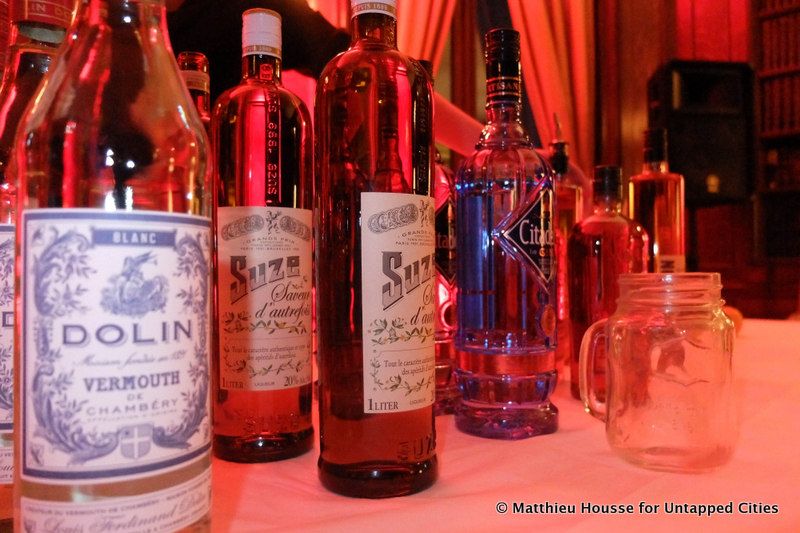
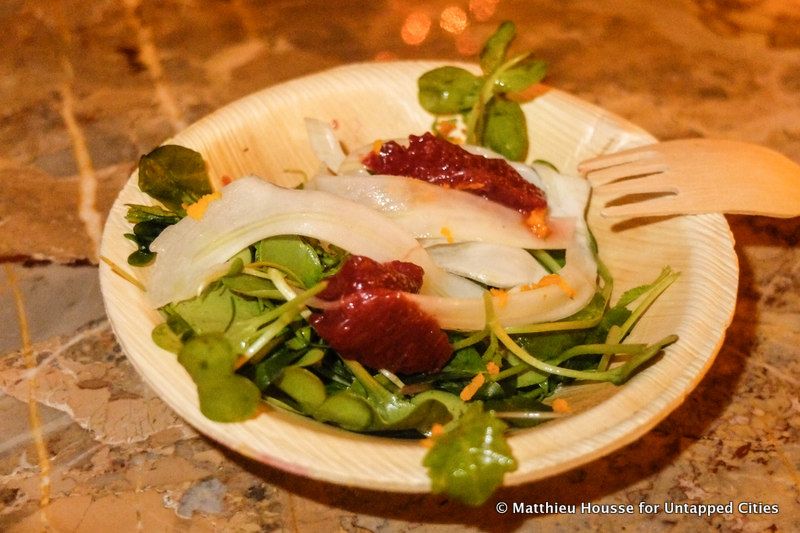

The entire combination of sensorial experiences was an art piece in itself, called CENTO: The Light & Dark & Famine & Feasting of the Ages, a collaborative installation between Reider, poet Christopher Cahill, engineer Leo Leite, and sound artist Maxwell Alper, Ambient sound was thus an important part of the event with experimental music emanating out of new concoctions of instruments. Instead of traditional musicians, the performance groups can be more accurately be described as sound artists.
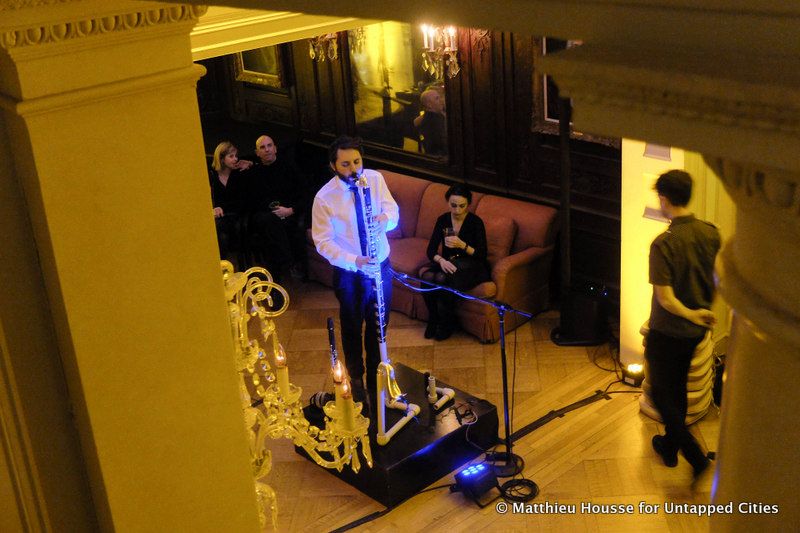
Around 9 pm, the guests gathered and sat on cushions directly on the floor for a concert, as visual effects were projected onto the walls of the room. Two violinists of the minimalist music group String Noise presented the “Unipolar Dance” (an anagram of their names, Pauline & Conrad), a fifteen-minute piece of music around one single note and its harmonics.

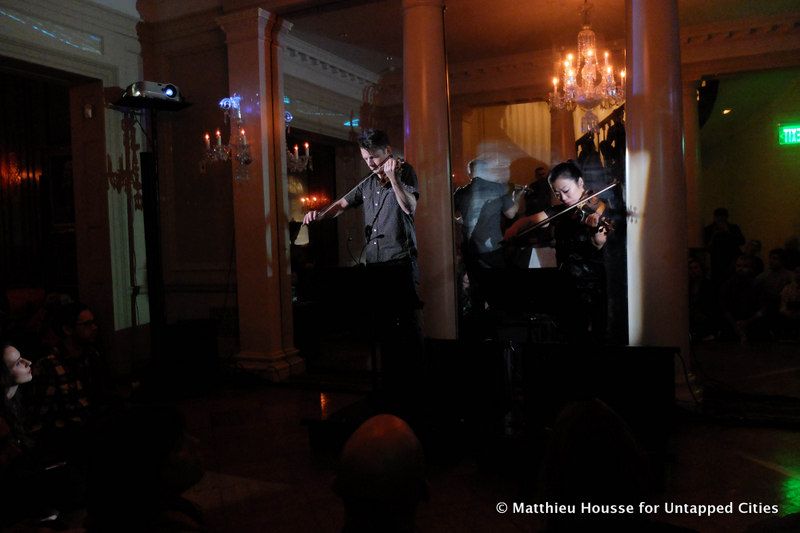
The American Irish Historical Society often hosts events, giving New Yorkers a chance to see the interior of this historic building on Fifth Avenue.
The next event will take place on May 16th. Next, discover more of the Gilded Age mansions of Fifth Avenue.
Subscribe to our newsletter